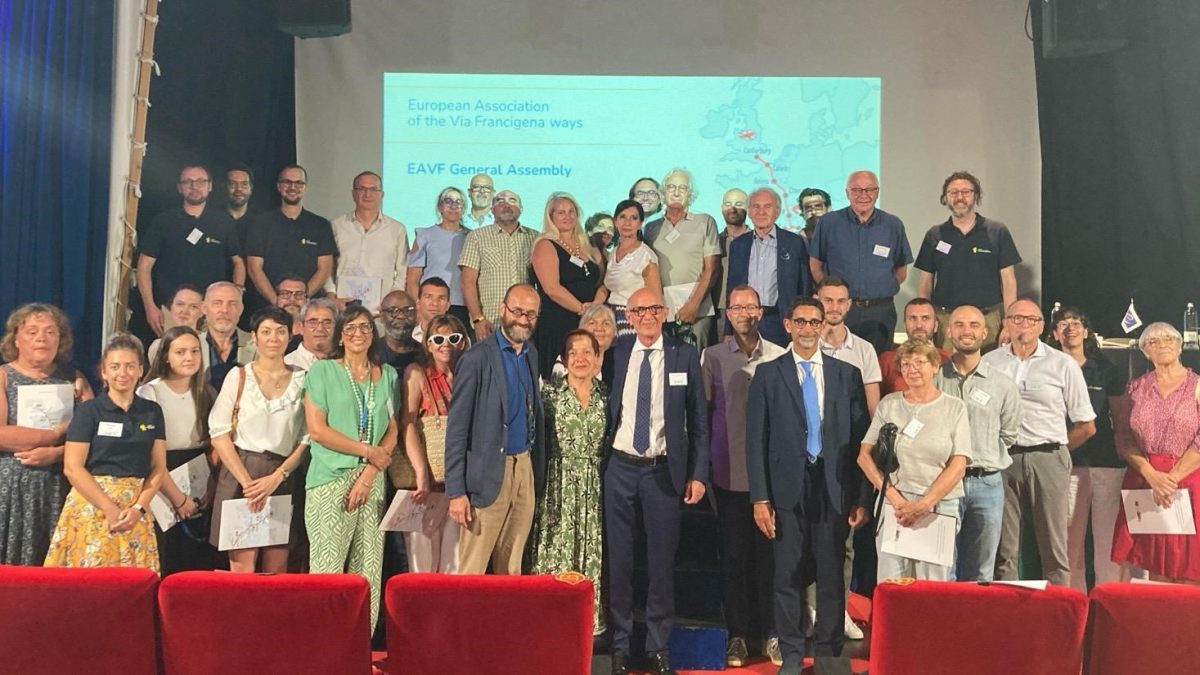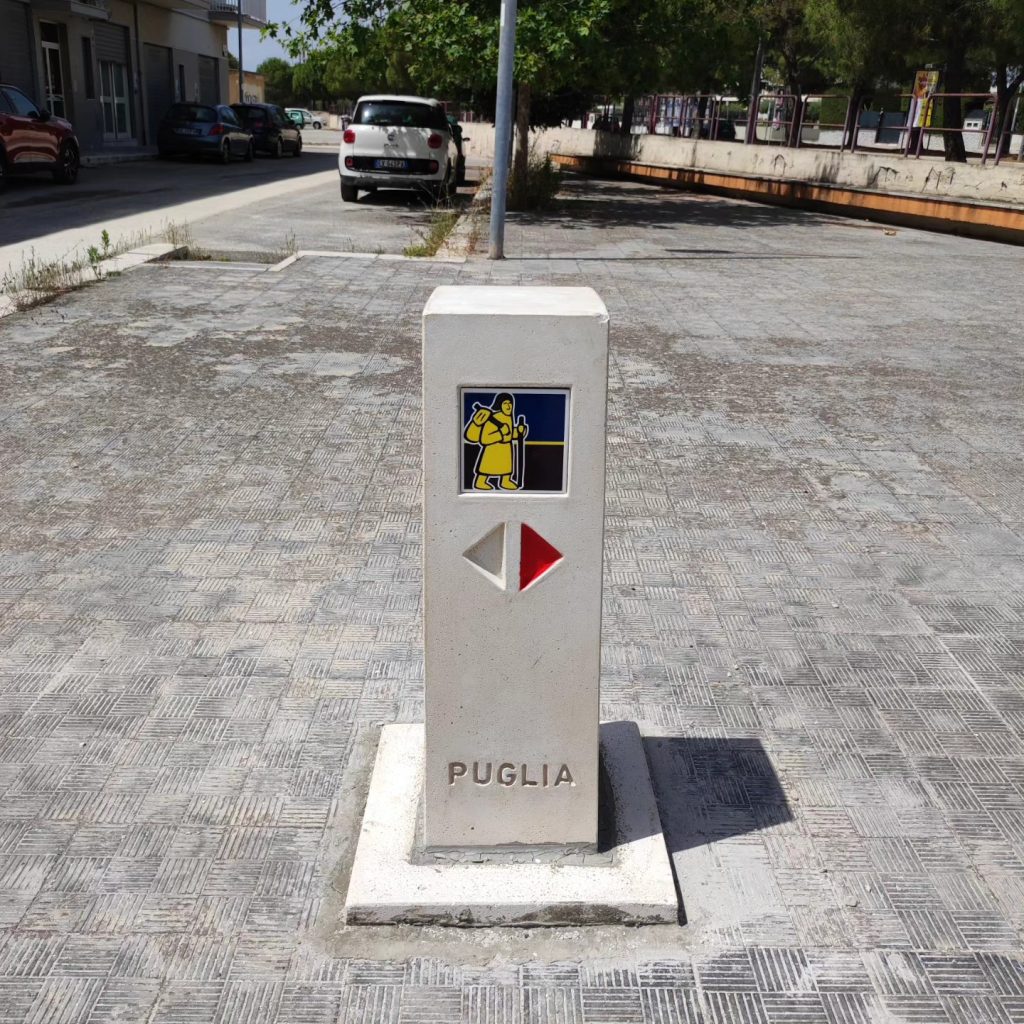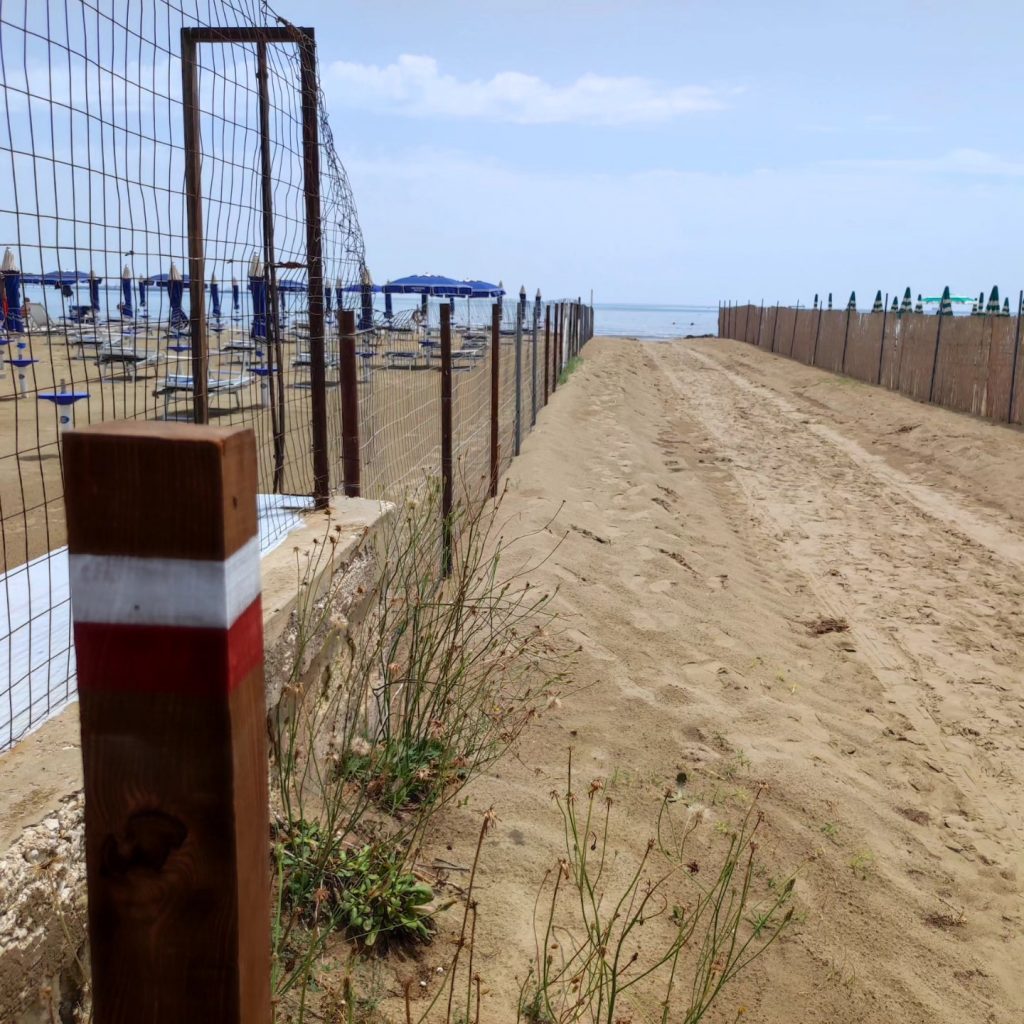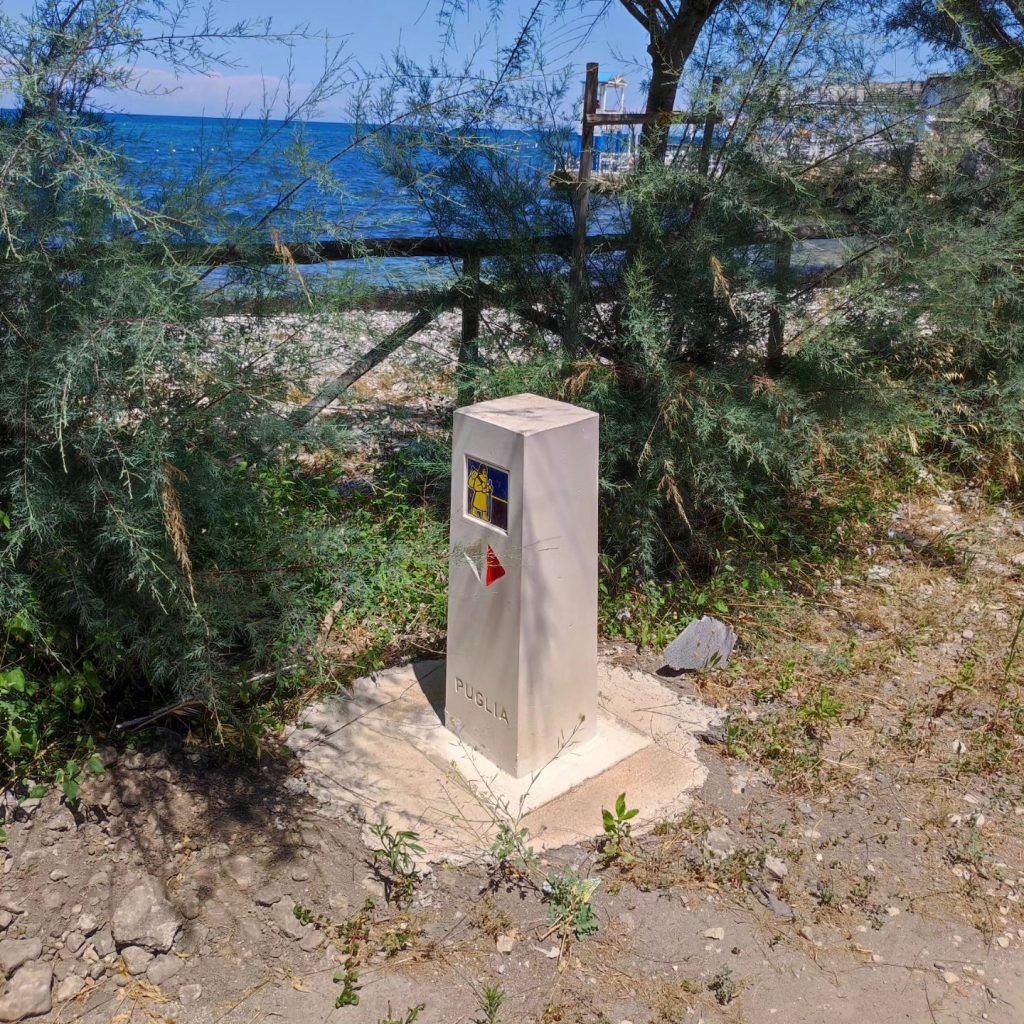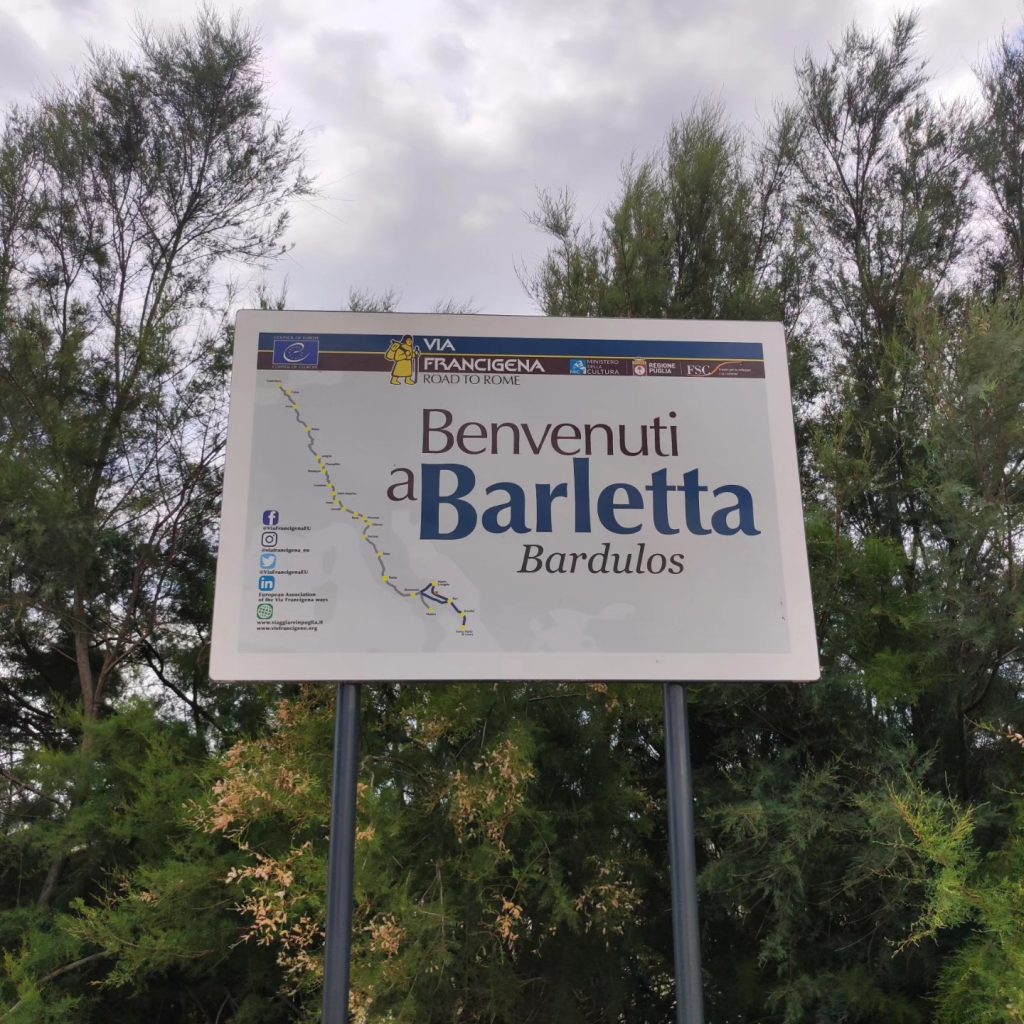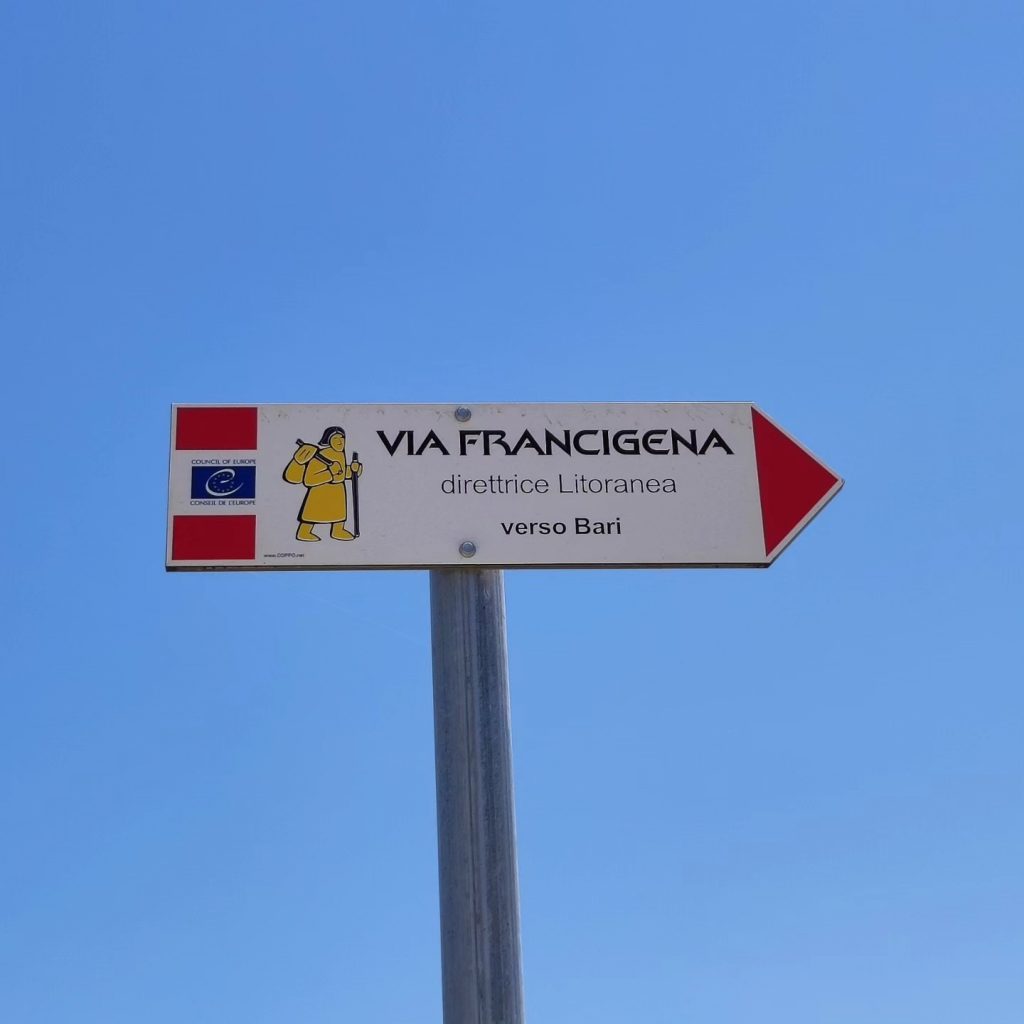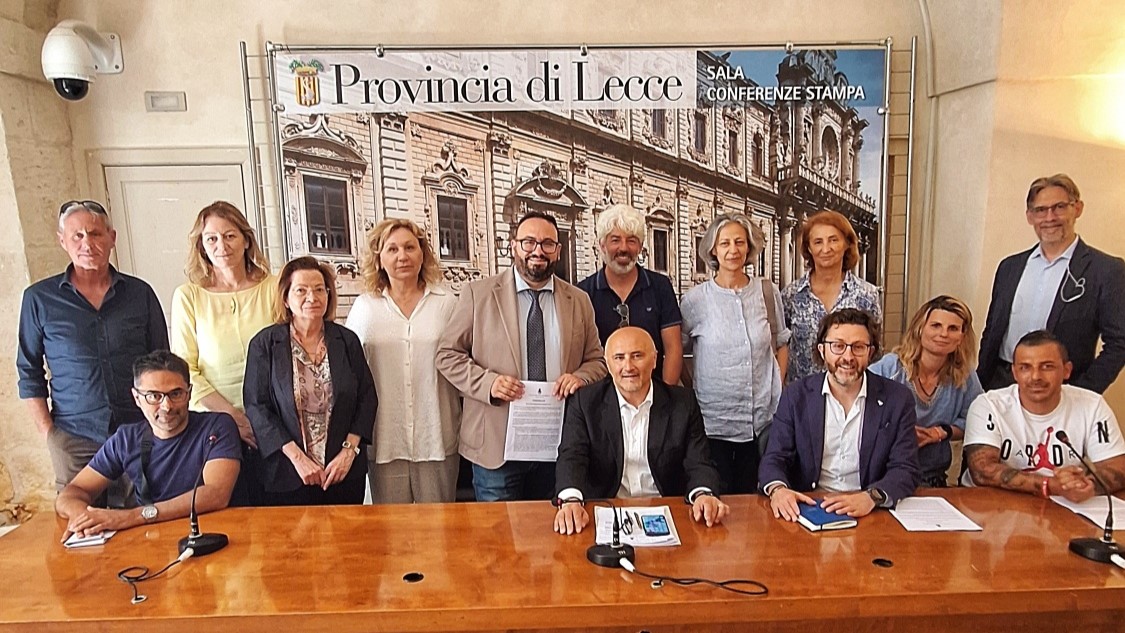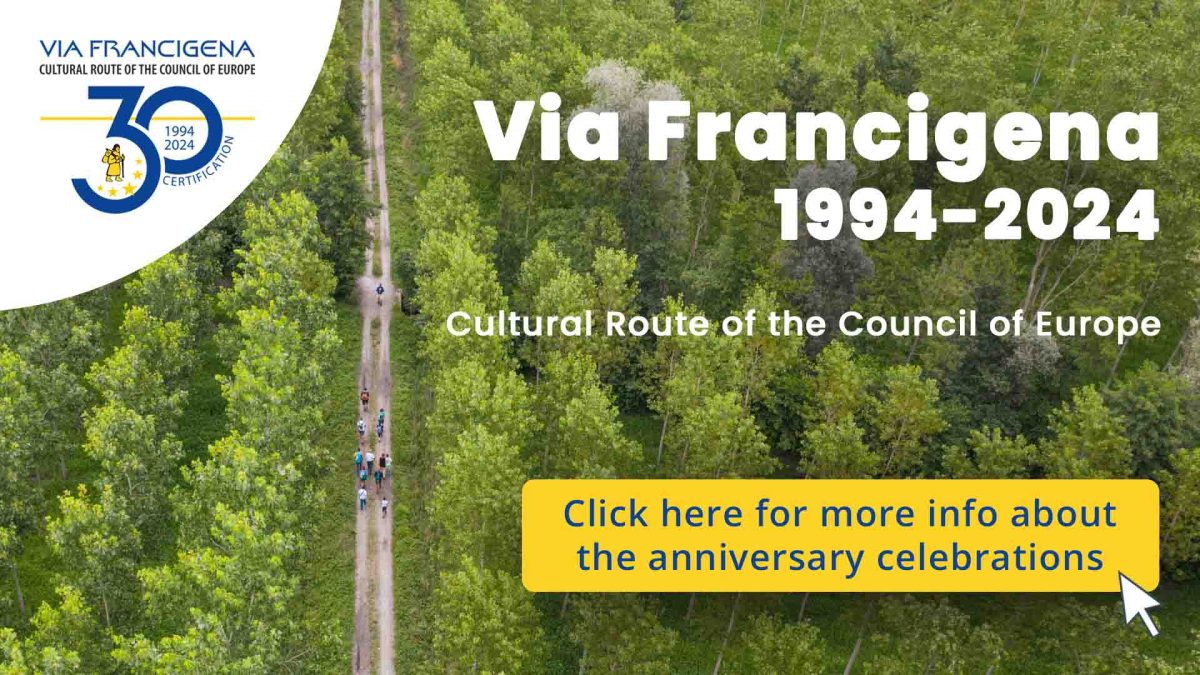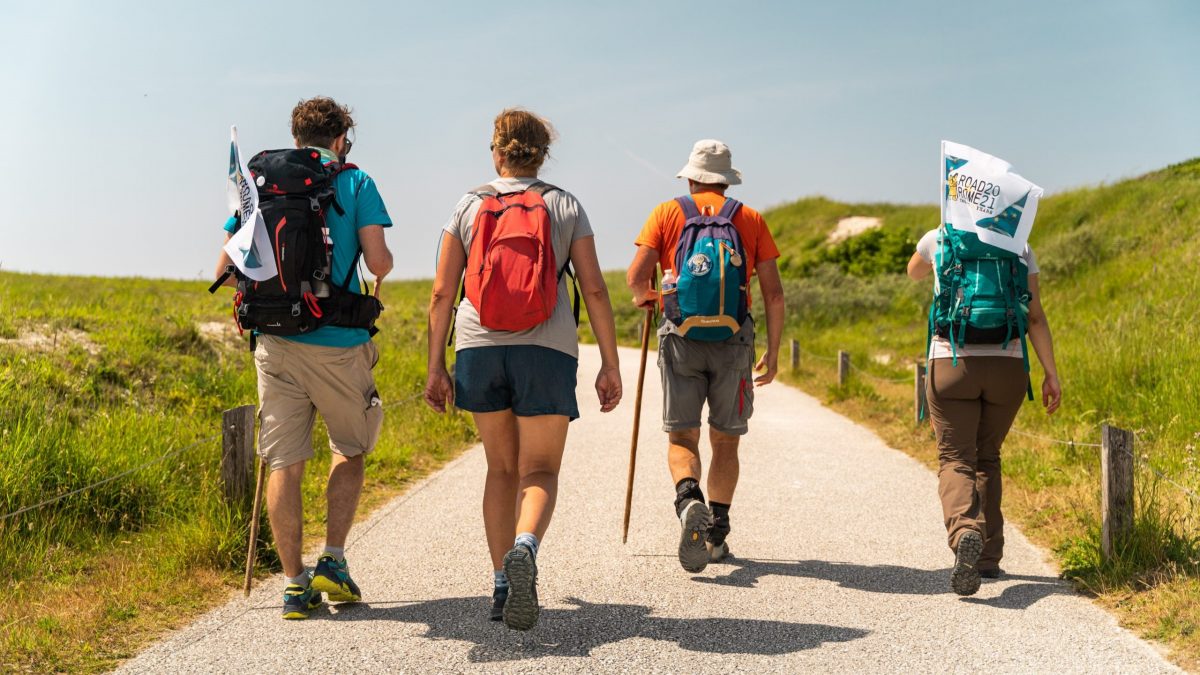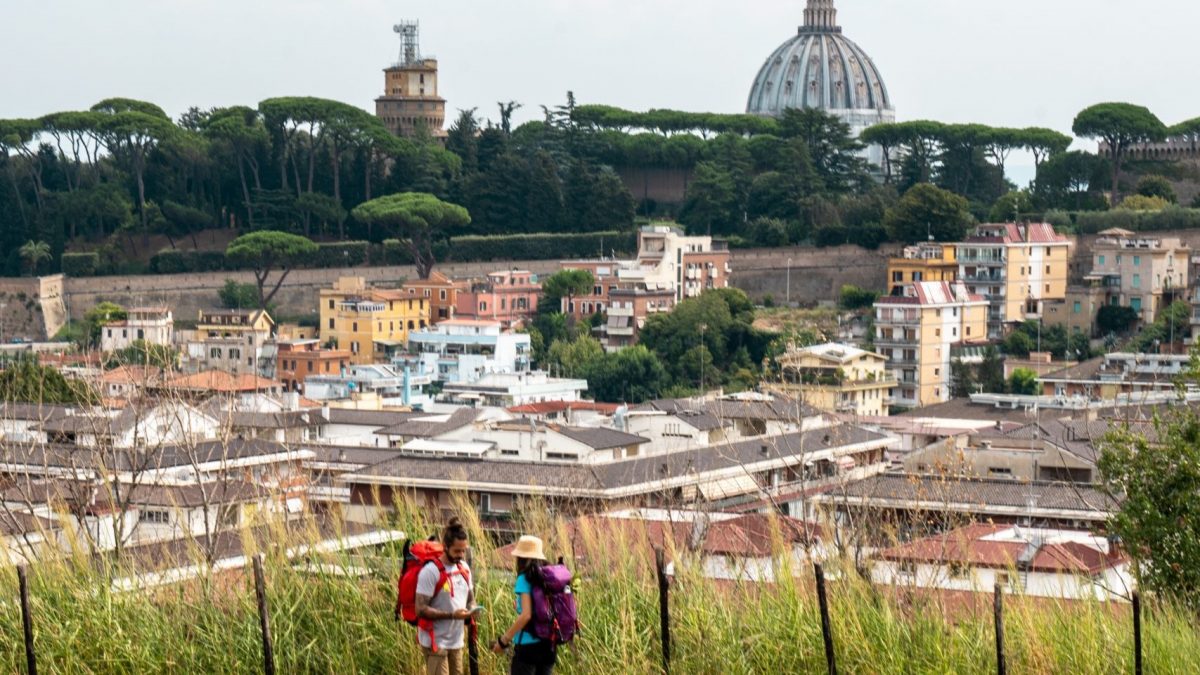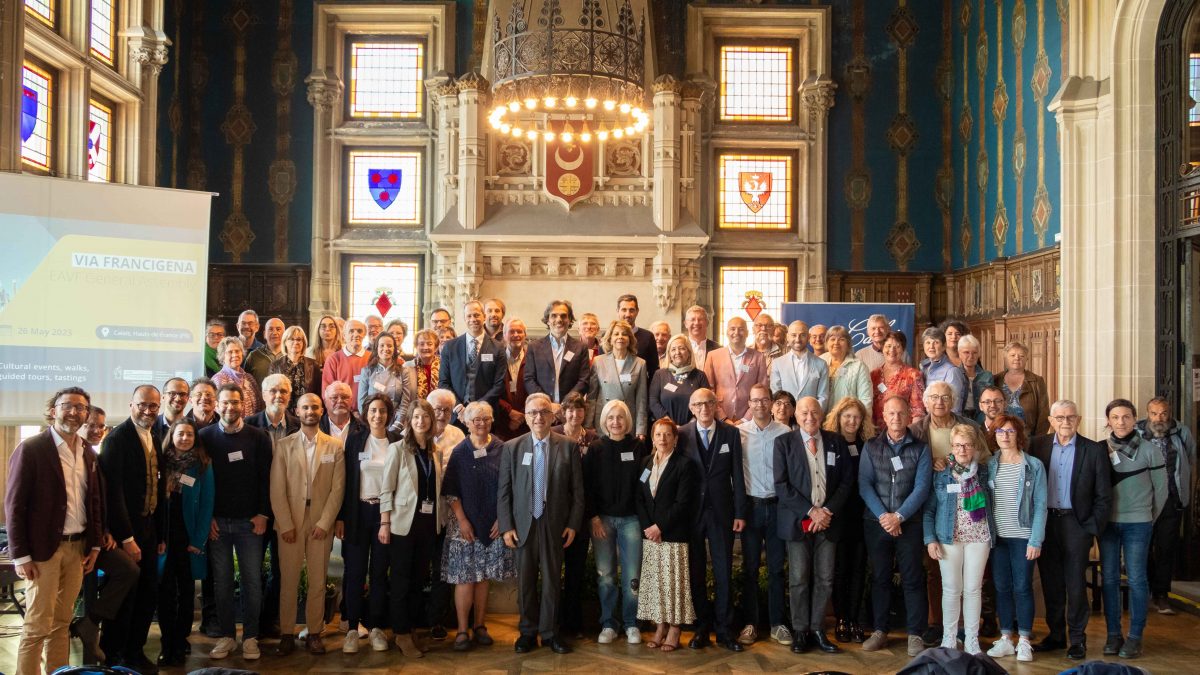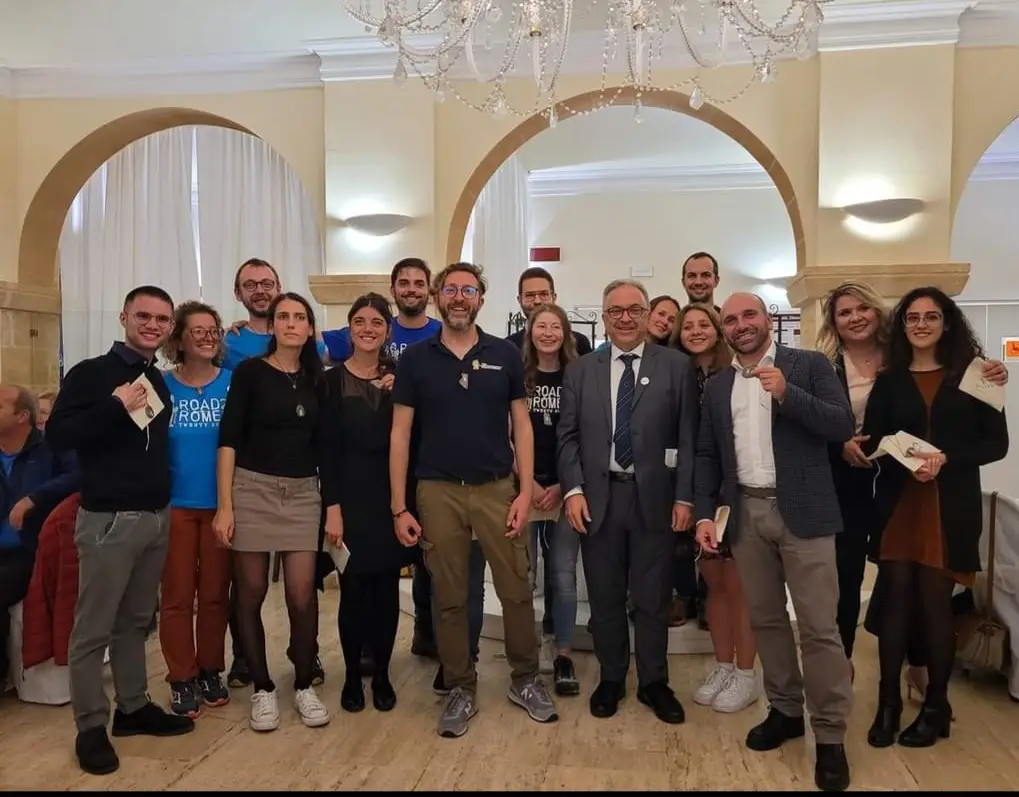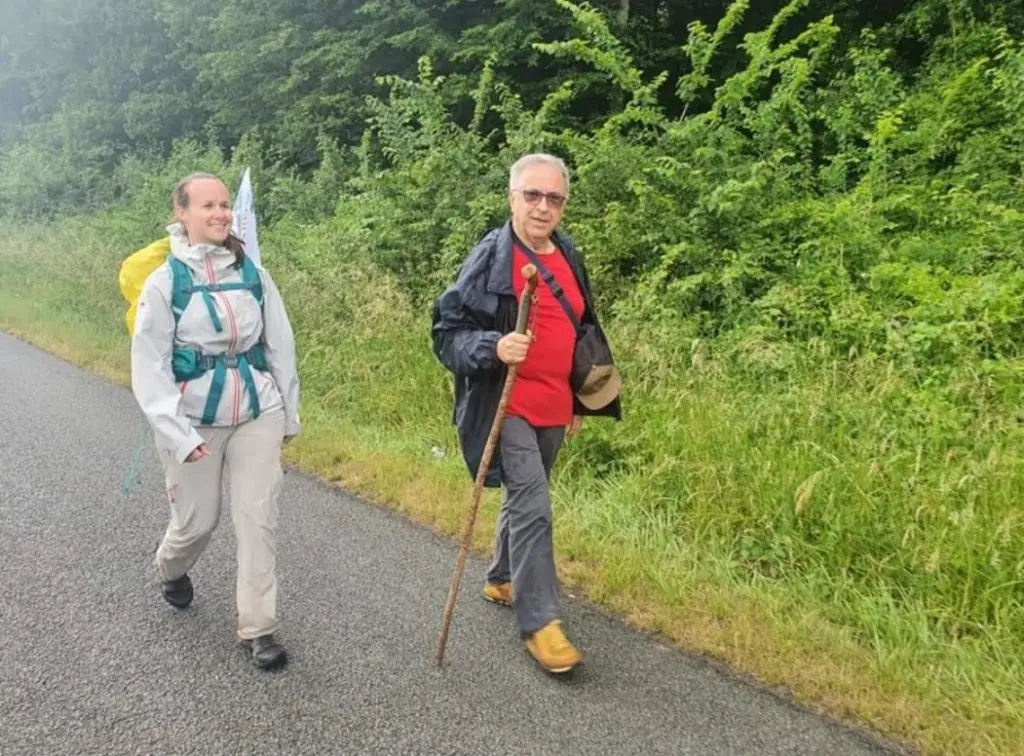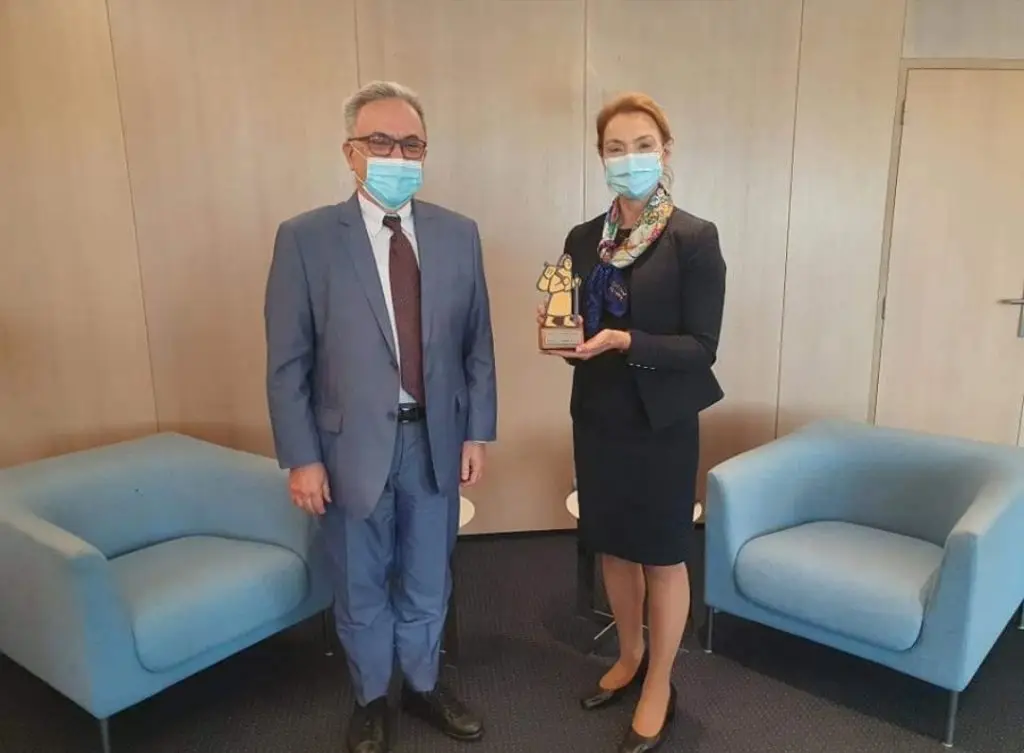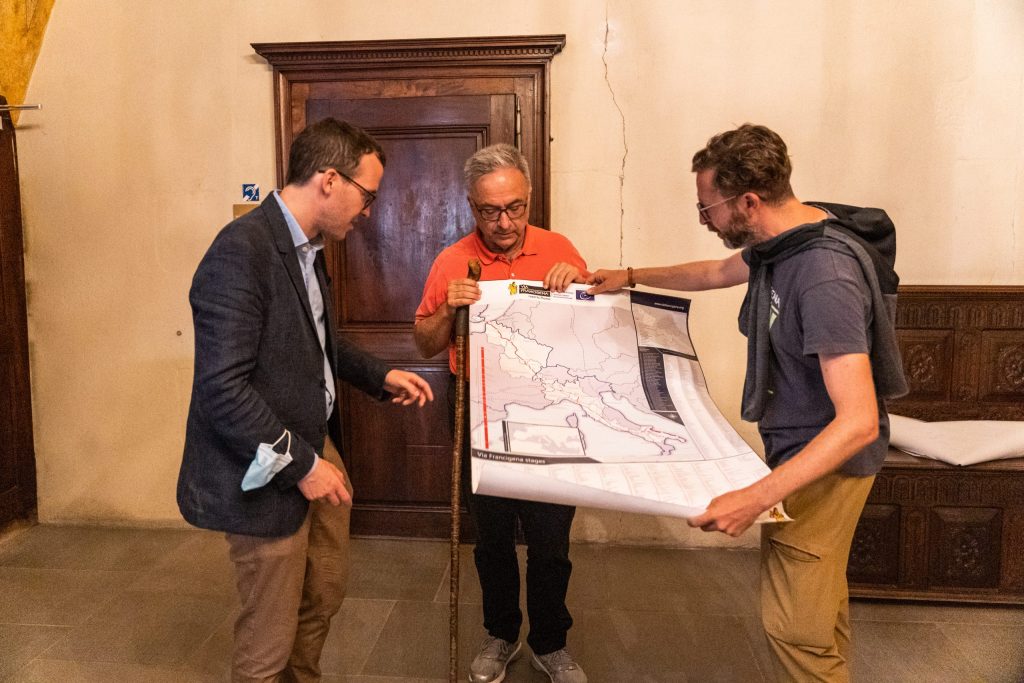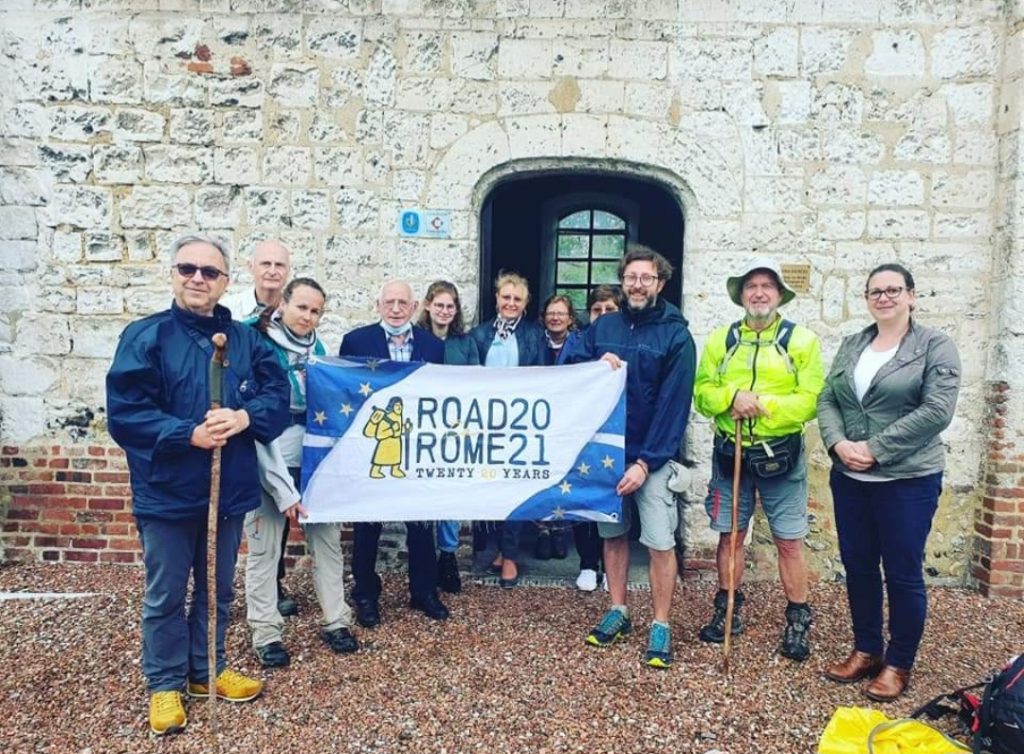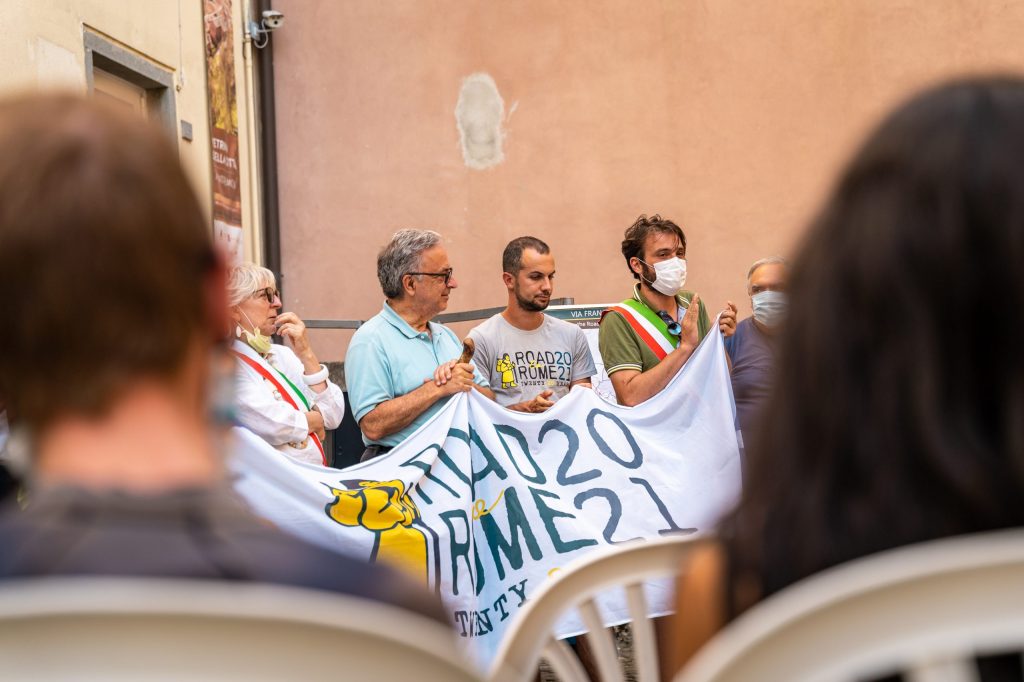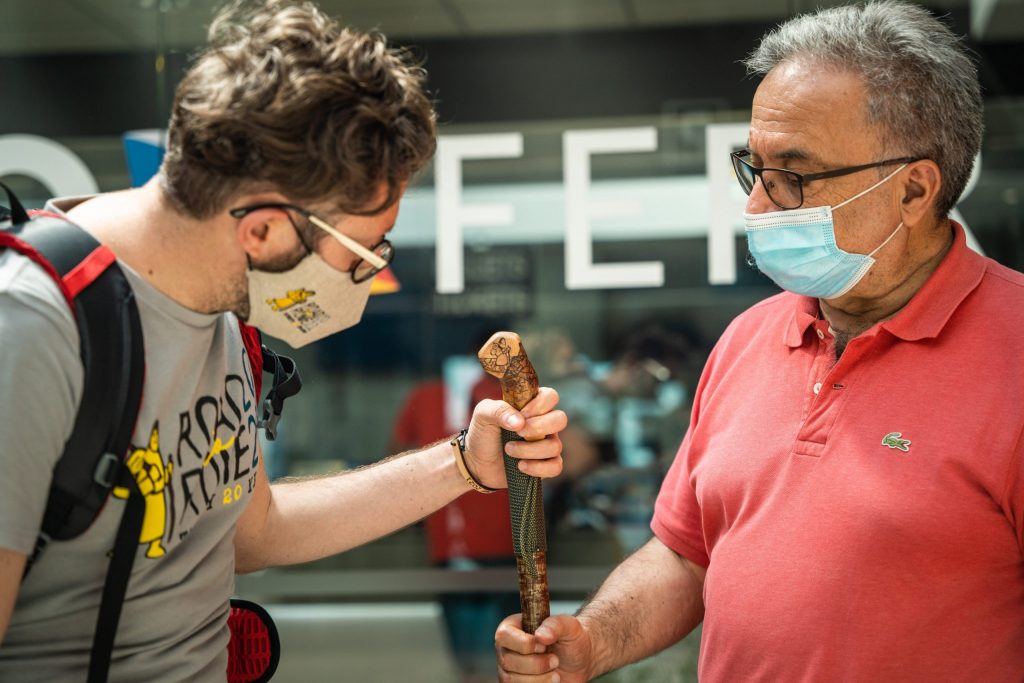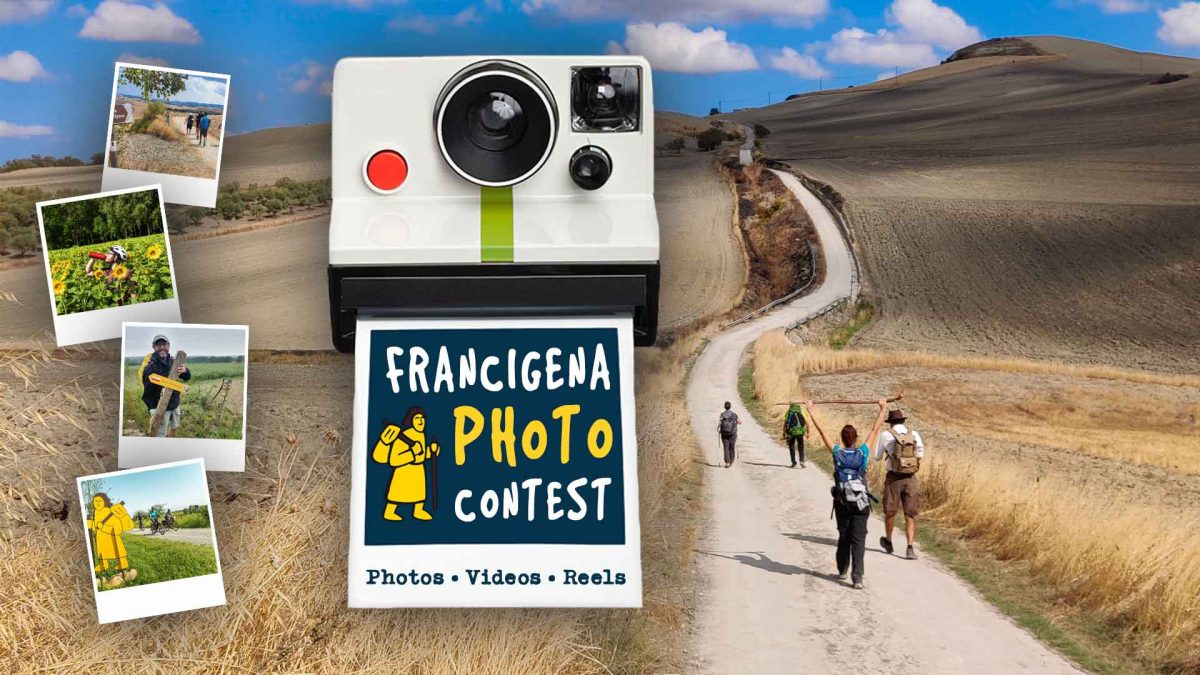The EAVF General Assembly in Fidenza paid warm tribute to the late president Massimo Tedeschi and elected his successor, Francesco Ferrari.
On July 30th, the General Assembly of the European Association of the Via Francigena ways was held in Fidenza, a small town in Emilia-Romgna region situated exactly halfway along the Francigena route and home to the EAVF headquarters. The meeting had a dual purpose: to honor Massimo Tedeschi, who passed away on June 22nd, and to elect the new President of the Association.
In Fidenza, Massimo had a significant political career, serving as the Mayor of his hometown before becoming the President of the European Association of the Via Francigena ways in 2001, the year of its founding. A pragmatic and forward-thinking man, he was able to build an enlightened project based on cooperation between territories, ideas, and people around the concepts of Europe, cultural heritage, and dialogue. The EAVF network, shaped by this visionary idea of Europe, today includes 244 local and regional authorities and 93 friendly associations, collaborating with institutions, local administrations, cultural and religious entities.
The General Assembly opened with a minute of silence and a long round of applause dedicated to Massimo Tedeschi.
Following the national anthems, which honored the individual cultural identities of the four countries traversed by the Via Francigena, Vice President Francesco Ferrari delivered the opening greeting to the Assembly. He recalled his personal experience alongside the late President Tedeschi over the past 23 years. Next, the Mayor of Fidenza, Davide Malvisi, spoke, followed by a video message from Andrea Corsini, the Regional Councillor of Emilia-Romagna.
The tribute to Tedeschi included the screening of the documentary film “Road to Rome”, an event he attended, accompanying all stages of the European journey organised by EAVF in 2021 to celebrate the Association’s 20th anniversary. Before the screening, director Luca Bruschi shared the story of this wonderful journey with the assembly, saying, “Road to Rome allowed EAVF to grow internationally and involve over 700 municipalities. It was an extraordinary experience led by Massimo Tedeschi, a visionary, pragmatic conductor, and lover of Europe”.
The Assembly then moved on to the election of the new EAVF President. The three Vice Presidents, Martine Gautheron, Gaëtan Tornay, and Aldo Patruno, initiated the discussion and debate, with numerous members contributing their input.
Francesco Ferrari was unanimously elected with a long round of applause. “This recognition brings me satisfaction and pride, testament to the great work done in past years. I am, however, aware of the significant work ahead of me, as succeeding such a great and extraordinary President as Massimo Tedeschi is no easy task. I will strive to perform my duties to the best of my abilities, with the utmost spirit of cooperation and dialogue, starting with institutions – municipalities, provinces, and regions – and including associations, essential for animating the VF at a local level. Massimo strongly wished for me to succeed him as President. I am fully aware that this is a challenging legacy, but I am confident that by working together in the spirit of continuity and following the path he laid out, we will honor the legacy we have received”.
At the end of the Assembly, the next meeting with EAVF members and friends was announced, scheduled for October 18th in Monte Sant’Angelo (Foggia, Puglia). Vice President Aldo Patruno presented the program of cultural and animation activities that will take place during this international event.



